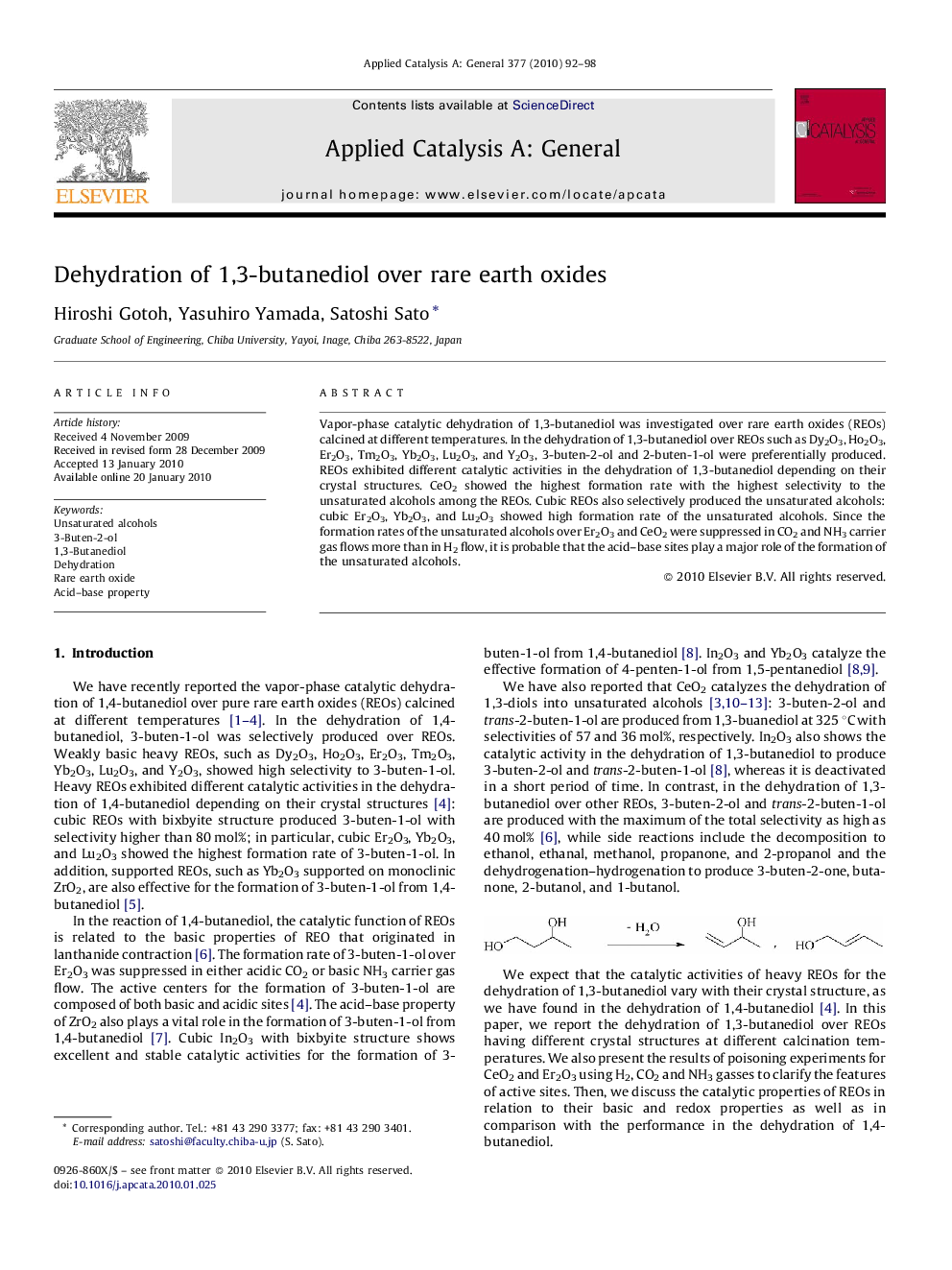| Article ID | Journal | Published Year | Pages | File Type |
|---|---|---|---|---|
| 42345 | Applied Catalysis A: General | 2010 | 7 Pages |
Vapor-phase catalytic dehydration of 1,3-butanediol was investigated over rare earth oxides (REOs) calcined at different temperatures. In the dehydration of 1,3-butanediol over REOs such as Dy2O3, Ho2O3, Er2O3, Tm2O3, Yb2O3, Lu2O3, and Y2O3, 3-buten-2-ol and 2-buten-1-ol were preferentially produced. REOs exhibited different catalytic activities in the dehydration of 1,3-butanediol depending on their crystal structures. CeO2 showed the highest formation rate with the highest selectivity to the unsaturated alcohols among the REOs. Cubic REOs also selectively produced the unsaturated alcohols: cubic Er2O3, Yb2O3, and Lu2O3 showed high formation rate of the unsaturated alcohols. Since the formation rates of the unsaturated alcohols over Er2O3 and CeO2 were suppressed in CO2 and NH3 carrier gas flows more than in H2 flow, it is probable that the acid–base sites play a major role of the formation of the unsaturated alcohols.
Graphical abstractVapor-phase catalytic dehydration of 1,3-butanediol to produce 3-buten-2-ol and 2-buten-1-ol was investigated over rare earth oxides (REOs) calcined at different temperatures. In the dehydration of 1,3-butanediol, CeO2 showed the highest formation rate with the highest selectivity to the unsaturated alcohols among REOs. C-type REOs, such as Ho2O3, Er2O3, Tm2O3, Yb2O3, Lu2O3, and Y2O3, also selectively produced the unsaturated alcohols. The formation rates of the unsaturated alcohols over CeO2 and Er2O3 were suppressed in CO2 and NH3 carrier gas flows.Figure optionsDownload full-size imageDownload high-quality image (82 K)Download as PowerPoint slide
